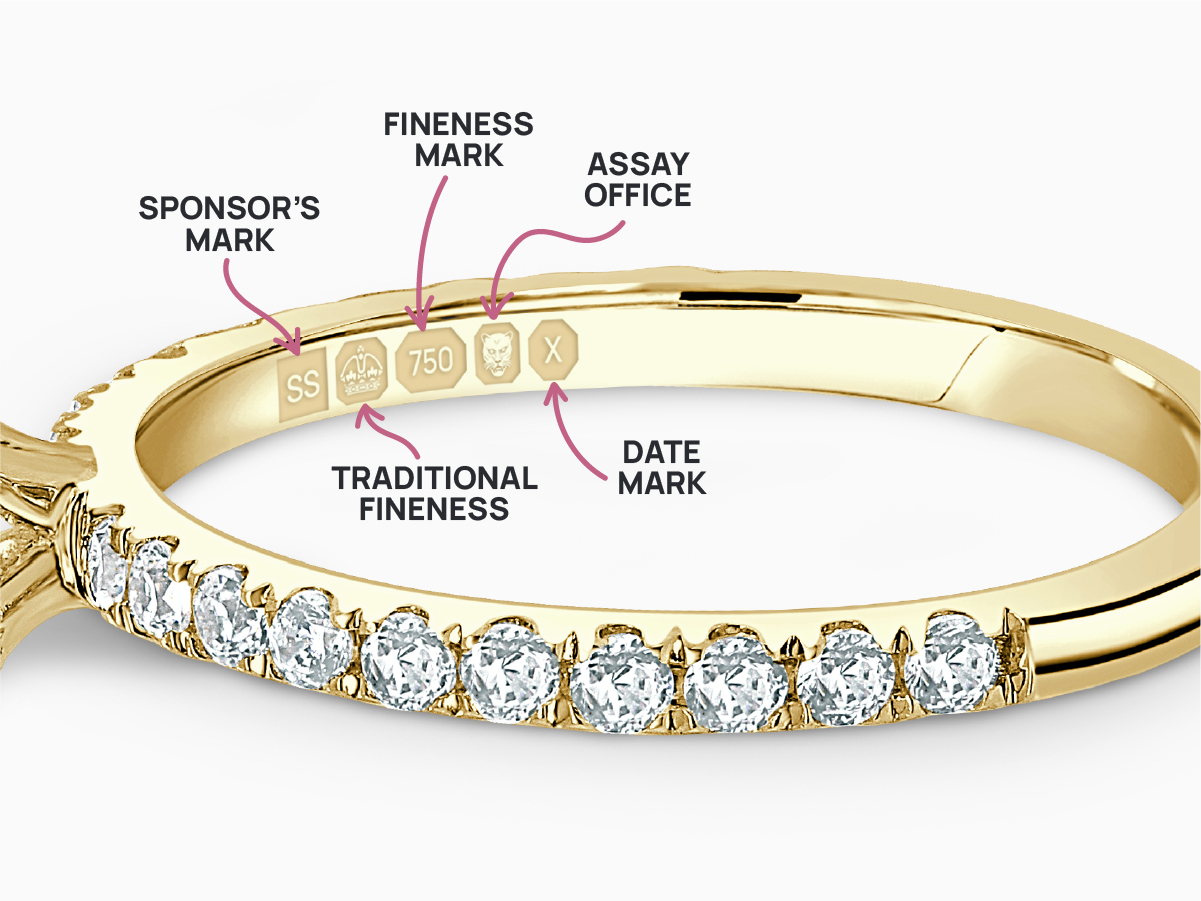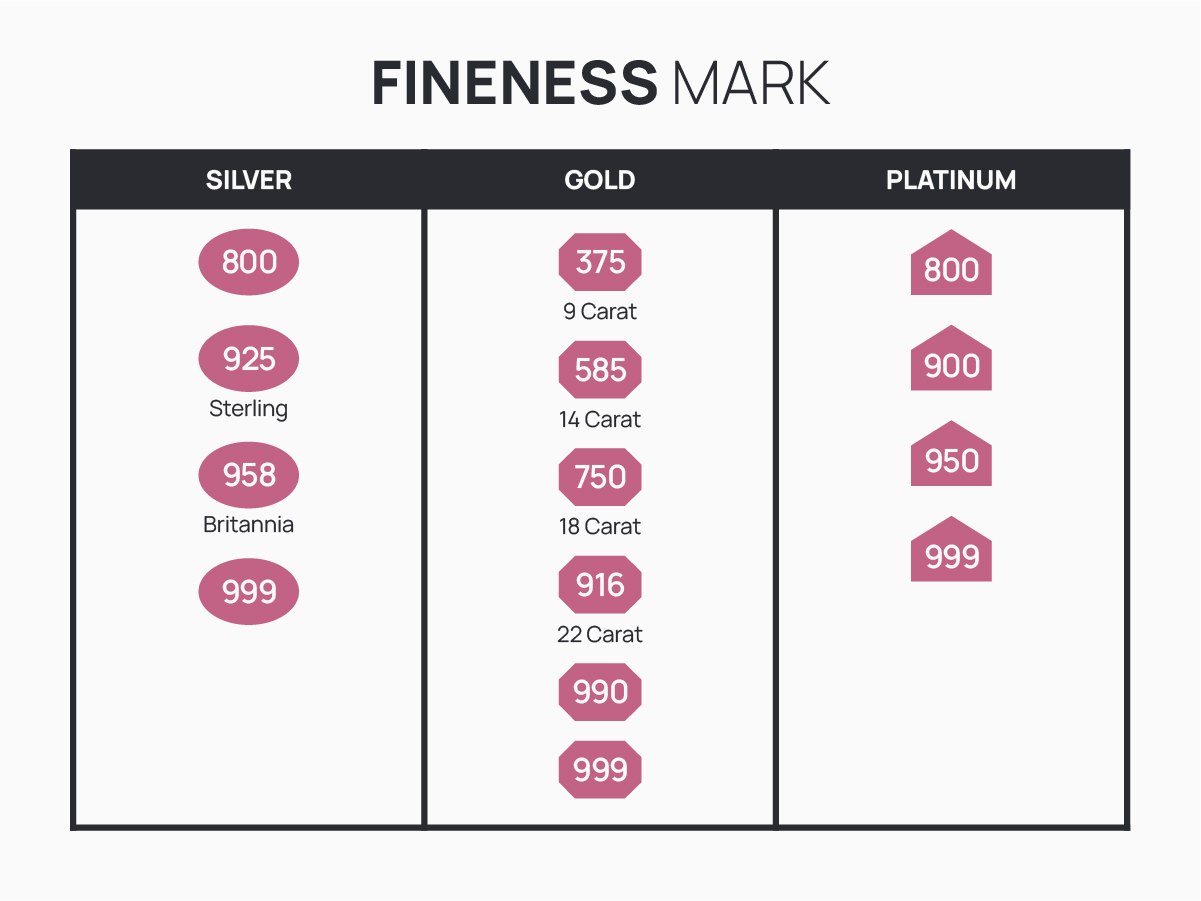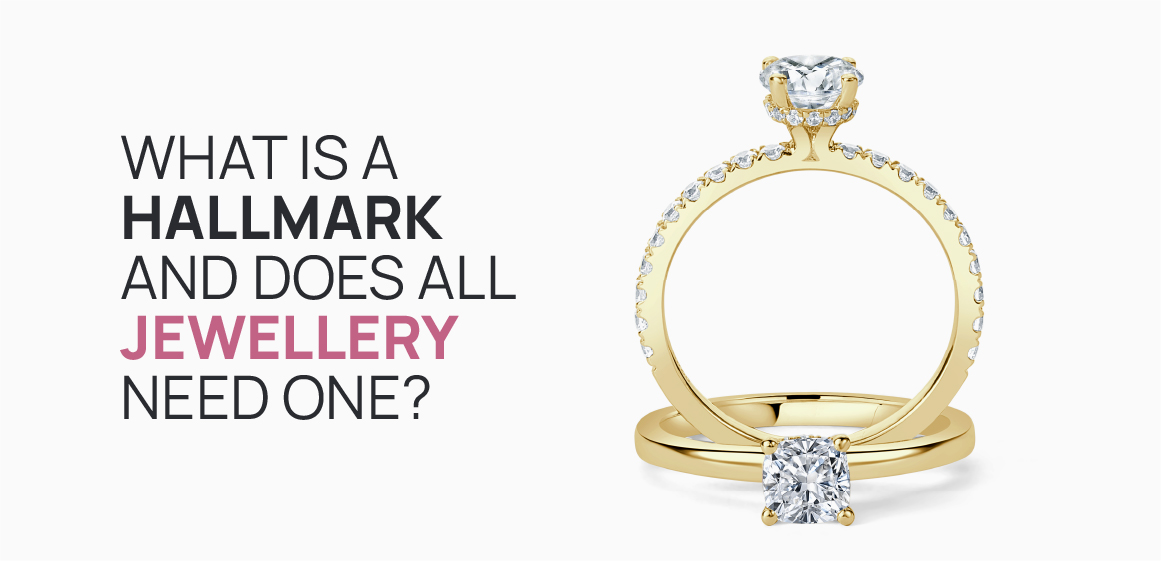In the UK, it’s a legal requirement that any gold, silver, platinum or palladium jewellery sold has an official hallmark from one of the four Assay Offices in the UK.
The hallmark certifying the purity of the precious metal is applied to the jewellery after it’s been thoroughly tested through the assaying process. The main reason for this is to provide consumer protection. With the high price of precious metals, there is a serious risk of fraud – for example, a thick plating of gold could easily cover a basic metal interior.
Even the most experienced jeweller or chemist can’t accurately calculate how much precious metal there is in an alloy by sight alone, so the UK’s Hallmarking laws protect the public and honest suppliers from those trying to deceive them. The UK’s Hallmarking Act 1973 makes it an offence for anyone in trade or business to:
• Describe an un-hallmarked article as being wholly or partly made of gold, silver, platinum or palladium.
• Supply or offer to supply un-hallmarked articles to which such a description is applied.
Any jewellery being sold as gold, platinum, silver or palladium needs to be sent off to one of the Assay offices located in Birmingham, Edinburgh, London and Sheffield. At these locations, the purity of the precious metals is tested through three different processes:
• Sampling – The metal is sampled through non-destructive means using X-Ray Fluorescence Spectrometry machines.
• Assaying – This spectrometry method is used on a random selection of samples and the results produced are extremely accurate.
• Hallmarking – If the tests don’t raise any red flags, then the hallmark is applied to the metal and it can be officially sold as a precious metal.
The UK is one of a few countries throughout the world that have made hallmarking compulsory. This applies to any items from overseas that are intended to be sold as a precious metal. The only time that this process isn’t necessary is if the metal being sold is under the legal weight threshold, which is 1 gram for gold.
How to recognise real hallmarks

Since 1998, there have been 3 compulsory marks that make up a hallmark, these include:
• The unique mark of the person or company responsible for sending in the article.
• The standard mark which shows the fineness of the metal.
• The assay office mark which shows where the jewellery was tested and hallmarked.
• Up until 1998, it was compulsory to have the year in which the article was tested and marked. Now, the stamp is optional.

When buying any gold jewellery, you should always make sure that there is a visible hallmark. It symbolises a stamp of quality that can only be applied by the Government Assay Offices. If you do see one of these marks, you can rest assured knowing that the precious metals used to create the jewellery has been thoroughly tested for purity.
At Steven Stone, all of our gold, silver, platinum and palladium jewellery carry official UK hallmarks.


For more information on our jewellery and how it is made, you can see our education section, or talk to one of our team. We have showrooms in Manchester, London and Cheshire.
.
Follow us on our socials
Pop over to our social platforms to keep up to date with Steven Stone’s latest jewellery content and news.




